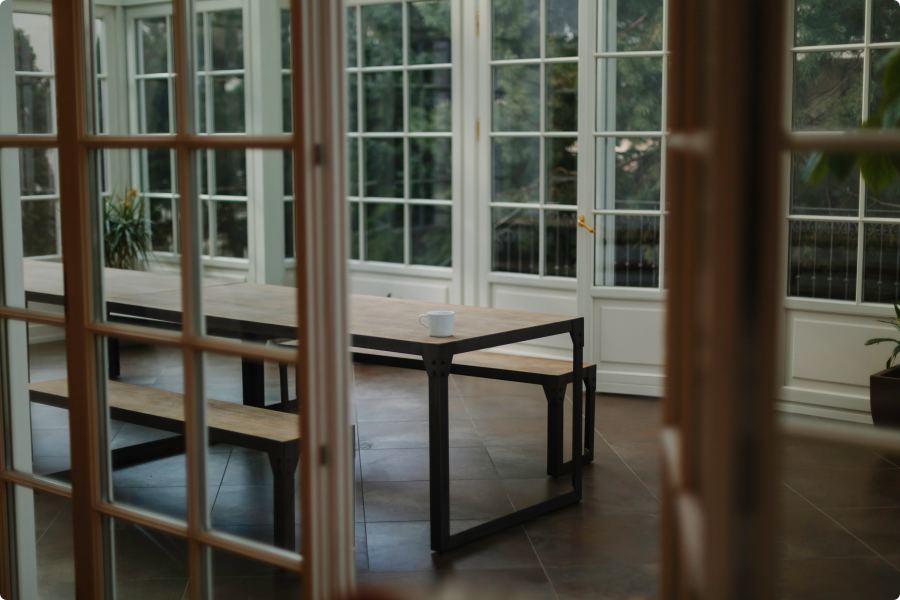If you’re looking to add more space to your home, a conservatory is not only an effective option, but a budget friendly one too.
Typically cheaper than a classic rear extension, conservatories have been a popular way for Brits to extend for decades. Yet, though we all know a conservatory when we see one, the process of creating them can be unclear.
To know the full extent of your conservatory options, here’s everything you'll need for the nitty gritty of planning…
Does a conservatory need planning permission?
You probably won’t need planning permission for your conservatory. They come under your permitted development rights, a government scheme that allows homeowners to extend without the need for planning permission.
However, in order to qualify for permitted development, your conservatory will have to follow a strict set requirements.
Rules to permitted development rights for conservatories
In order to avoid a full planning application for your conservatory, you’ll need to ensure your project…
- Sits to the rear of the house (not the front)
- Must not extend beyond the rear wall of the existing house by 3m if an attached house or 4m if detached
- Uses similar building materials to the existing house
- Takes up less than 50% of the size of the land around the original house ("original" being the latest of when the property was built or if it was built before 1948, then as it stood on 1st July 1948)
- Is less than 4m in height (or less than 3m if within 2m of a property boundary)
- Has eaves and a ridge that are no taller than the existing house
Exceptions to the rule - households excluded from permitted development rights
You’ll need to bear in mind that permitted development rights can’t be used on these households...
- Listed buildings
- Flats or maisonettes
- Some new developments
If you plan on adding a conservatory onto a new build, you’ll also need to check with your developer to make sure there are no restrictions within your contract for such an addition.
Homes from conservation areas are not excluded from permitted development rights, however they do hold much greater restrictions.

It's also worth noting, certain homes and areas have not been included in the 2020 extension of permitted development rights. These are...
- Homes within Scotland, Wales, or Northern Ireland
- Homes built before 1948
In these cases, some projects will still be covered by permitted development rules but not all. To fully understanding your planning options, we recommend talking to an expert.
Why you should get a lawful development certificate
A lawful development certificate isn’t a legal requirement, but incredibly useful for anyone using their permitted development rights.
This certificate essentially proves to both your local authority, and future buyers, that your home project was legal at the point of construction. This protects you in the event the rules around permitted development rights change, and is particularly worthwhile in politically charged pieces of land, such as the green belt.
A lawful development certificate is applied for in the much the same way as planning permission.
What will you need to apply for a Lawful Development Certificate
- An application form
- Evidence verifying the information within the application.
- This would include architectural plans and elevations
- A site location plan
- A fee
You’ll also need to strap yourself for a wait, as approval will typically take 8 weeks to be delivered. However, unlike planning permission, as long as your project ticks the right boxes, you should be fine.
How to apply for planning permission
If your project doesn’t come under permitted development rights, you can still achieve your conservatory goals through planning permission.
Though planning permission has a scary reputation, having a good architect by your side can help take away much of the stress. You’ll need all the documentation required for a lawful development certificate, including architectural drawings. The main difference between planning permission and a lawful development application is that planning permission tends to be more subjective, with some areas having a harder time of getting approval than others. For this reason, you'll want an expert by your side who has extensive experience of the process.
At Resi, we not only put together these drawings, we package everything up, ready for submission. Our in-house planning officers will then manage the application on your behalf, ensuring you have the best chance of first time approval.
Our planning team have helped thousands of homeowners secure planning permission across the UK. When you're choosing your own architect, make sure they have enough experience to get your project through the planning door!
Make sure you meet building regulations
Though this article is about planning permission, it’s worth also touching on building regulations.
These are a separate issue to planning, and concern the technical details of your home. You’re legally required to ensure your home meets these standards so you end up with a safe and healthy space to inhabit.
To ensure your project is in line with UK building regulations, we recommend you commission a set of technical drawings of your proposed build, so your contractor has detailed instruction on meeting all legal requirements.
However, you will be exempt from this process if your conservatory…
- Is made up of 80% or more translucent roof
- Has its own independent heating system
- Is no less than 1m away from any boundary
- Built only at ground level
- Measures less than 30sqm in size
- Isn’t part of an open-plan layout, but is a self contained room
On this last point, please be aware that any removal of exterior doors or walls always requires building regulations approval.
Considering your conservation options? Perhaps you need a hand with planning? Whatever your circumstance, Resi can help you get ready for construction. Book in a free consultation with our experts now!




















